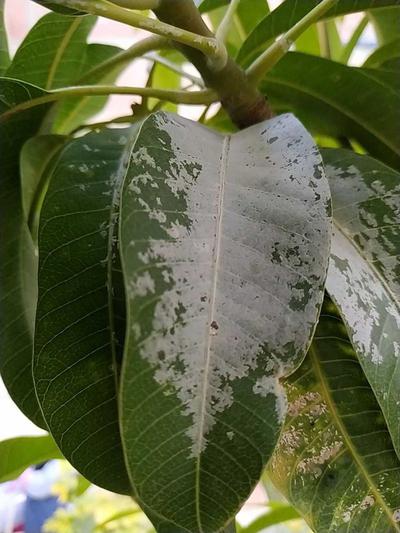Mango Leaf Coating Mite
Cisaberoptus kenyae
Mite
In a Nutshell
- White coating on the upper leaf surface.
- Leaf discolouration.
- Occurrence of defoliation.
Can also be found in
Symptoms
Mites live in groups and create a white or waxy coating on the upper leaf surface. This coating develops further into white strands which harden to become a silvery membrane that covers the entire leaf. The mites suck plant sap from the leaves resulting in discolouration. Severely infested leaves appear dry and brown-black in colour. Affected leaves often drop off after yellowing.
Recommendations

Organic Control
As it is a minor pest and does not cause a reduction in fruit yield, it is not necessary to control it biologically. Simply cultivate good management practices.

Chemical Control
Always consider an integrated approach with preventive measures together with biological treatments, if available. As it is a minor pest and does not cause a reduction in fruit yield, it is not necessary to use chemical miticides for the infestation.
What caused it?
Damage is caused by all active life stages of the leaf coating mite. The mite is very tiny, usually about 0.2 mm, and is not able to be seen with the naked eye. It is light-coloured and cigar-shaped, with eggs that are pale white, round and flattened. All active life stages live underneath the leaf coating and suck the sap out of the plant. The mites generally infect only over-grown or neglected mango trees. The population of mites reaches a peak in March and lowers during December. Infestation is severe during the summer months.
Preventive Measures
- Prune affected shoots after harvest.
- Remove and destroy leaves with a white coating.
- Prune plants to increase the amount of light and ventilation that reaches the leaves to discourage and reduce infestations.



